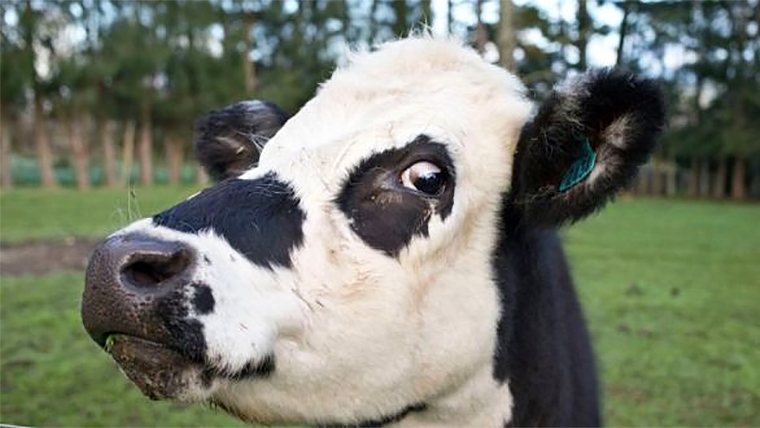
This content was supplied by Rabobank.
With global dairy production growth set to remain constrained and a ‘fog of uncertainty’ clouding the demand outlook, Rabobank has announced a farmgate milk price forecast of $9.00kg/MS for the 2022/23 dairy season.
In its recently-released New Zealand Dairy Seasonal Outlook report, Rabobank says seismic global events – including the war in Ukraine and ongoing Covid-19 lockdowns in China – continue to reverberate in dairy markets across the globe, providing a challenging backdrop for milk price forecasts covering the new dairy season.
Rabobank senior agricultural analyst Emma Higgins said the macro-economic influences on the dairy sector are now far more uncertain than was the case last season.
“Tepid global milk supply growth should ensure the majority of New Zealand’s dairy farmers enjoy a sixth consecutive profitable season in 2022/23,” she said.
“But with the demand outlook so hazy, and significant volatility anticipated in the pricing of both dairy commodities and key farm inputs, dairy farmers should prepare for a bumpy ride ahead.”
Supportive supply and uncertain demand
The report says milk production across the ‘Big 7’ dairy producers (Argentina, Brazil, Uruguay, EU, UK, New Zealand and Australia) is set to remain constrained across most of 2022, providing a supportive base for global dairy commodity pricing.
“Despite strong farmgate milk prices in most regions across the world, the major export countries will continue to grapple with rising costs of inputs, lack of labour, unfavourable weather, and variable feed quality and costs,” she said.
“We anticipate a continued decline in the first half of 2022 milk production in the ‘Big 7’ exporting regions before a mild recovery starting in the second half of 2022 and into the first half of 2023.”
Ms Higgins said anticipating global dairy demand was far less straightforward, with demand risk significantly more elevated than usual.
The report says the conflict in Ukraine is a key factor heightening this risk due its negative impacts on the global economy and the potential for adverse spin-off impacts on dairy demand.
“As a result of the war, many economic forecasters have recently slashed their global economic growth expectations, including the International Monetary Fund (IMF) who last month cut their forecast by 0.8 per cent to 3.6 per cent for 2022,” she said.
“The outlook for farm input cost pressure is also worsened by the ongoing geopolitical conflict with prices for both fertiliser and oil prices likely to remain high with supply certainty caught in the cross-fire of the war.”
The report says ongoing Chinese lockdowns are a further factor carrying significant downside implications for global dairy demand.
“At the current time, fully locked-down Chinese cities account for around 10 per cent of China’s 2021 GDP, with this rising to 35 per cent when also considering cities in partial lockdown,” Ms Higgins said in the report.
“And as the world’s largest importer of dairy products, these movement restrictions are creating far-reaching reverberations well outside of China with global supply chains, manufacturing bottlenecks, supply and demand imbalances and world economic growth all subject to the extent of the Chinese lockdowns.
“Our base-case assumption is that many regions in China will remain under various lockdown policies for much of this year, with Shanghai lockdown restrictions beginning to ease somewhat from later this month.”
China remains key to New Zealand farmer fortunes
Ms Higgins said with around 45 per cent of New Zealand dairy exports shipped to China in 2021, New Zealand was one of the countries most significantly impacted by China’s Covid19 suppression measures.
“Chinese import demand firmly remains the central consideration for New Zealand’s farmgate milk price forecast and we are becoming increasingly concerned about the impacts of a continued “zero-covid” approach,” she said.
“The impact of lockdowns has slowed down and exacerbated the oversupply situation in China, considering still roaring domestic milk production growth and continued growth of powder import during quarter one this year. We expect this to continue to feed pressure back up the supply chain on farmgate milk prices within China, as well as putting pressure on global dairy commodities prices.”
The report says local Chinese milk prices have drifted lower in recent months and this is another factor likely to adversely impact Chinese import demand.
“Based on Rabobank’s import parity analysis, the latest landed Oceania Whole Milk Powder (WMP) prices have now eroded most of the premium to domestic milk prices,” Ms Higgins said.
“The domestic spot market prices for imported WMP have continued to trade at near or below GDT prices, pointing to no immediate trading profit for the domestic traders. And this will challenge the import demand appetite.”
Upside and downside risks
Beyond Chinese import demand, the report says a number of other factors also have the potential to alter New Zealand’s milk price forecast needle in the coming season.
“Additional downside risks to our forecast include the potential for recession in the US and/or the EU as central banks hike interest rates while processors passing on higher ingredient costs may lead to global consumer dairy demand buttoning off more than expected,” Ms Higgins said. “There is also the risk of secondary economic sanctions being imposed on China in the event they were to support Russia in the conflict with Ukraine.”
“On the flip side, the upside risks include key dairy production regions struggling to increase milk production output, supply scarcity supporting prices at a higher level as buyers continue to purchase ‘just in case’, and further weakening of the New Zealand dollar.”
A summary of all analysts' forecasts for both the 2021/22 and 2022/23 seasons is here.
Dairy prices
Select chart tabs
2 Comments
The NZX 2022/23 Milk Price futures contract has been remarkably stable the last couple of months trading in a relatively tight band of $9.40-$9.80 with the last trade at $9.75/kgMS. Interesting that ANZ and now Rabobank well below this level. We have a shareholding in two farms and have hedged approx 55% of next season's production at $9.80 ... seems prudent but leaves us still exposed to cost pressures which we can't really control although a nice warm spring and some decent summer 2023 rainfall will help ( unlike what we received this season !! )
There is an interesting article in the Washington Post about the milk shortage in Cuba. I was struck by the paragraph
"Meanwhile, Cuba will remain dependent on imports. It buys about half its milk abroad, in powdered form, with distant New Zealand its biggest supplier. Shipments have been slowed by disruptions in the global supply chain, as well as the Communist government’s “lack of currency,” according to Fonterra, the biggest dairy exporter in New Zealand"
So if we are the biggest supplier to Cuba, it won't be at premium prices, and there will be issues getting payment, especially as Cuba is broke. That means the income and sales volume would be shaky at best.

We welcome your comments below. If you are not already registered, please register to comment
Remember we welcome robust, respectful and insightful debate. We don't welcome abusive or defamatory comments and will de-register those repeatedly making such comments. Our current comment policy is here.